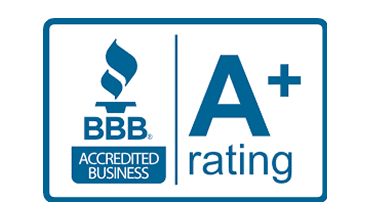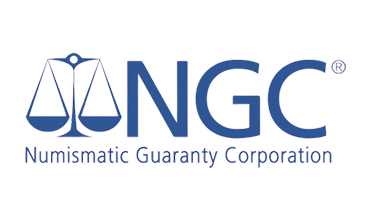Understanding Custodians, Depositories, and Required Minimum Distributions (RMDs) for IRAs
Many critical components shape the management and compliance of IRAs. Whether you're new to IRAs or seeking to deepen your knowledge, this overview will equip you with essential insights to navigate these crucial aspects effectively.
IRAs are powerful tools for building a secure financial future, providing tax advantages that can enhance your savings. Here, we explore the different types of IRA-eligible accounts and their unique benefits, each offering financial growth and security potential.
What You Need to Know About RMDs
What Are Required Minimum Distributions (RMDs)?
Required Minimum Distributions (RMDs) are mandatory withdrawals that traditional IRA owners must begin taking annually once they reach a certain age, typically 73 years old (or 70½ if born before July 1, 1949).
These withdrawals are calculated based on life expectancy factors provided by the IRS and aim to ensure that tax-deferred retirement savings are eventually subject to taxation. Failure to withdraw the required amount can lead to significant penalties. Roth IRAs, however, do not require RMD's during the account owner's lifetime and can be positioned for a pass of wealth to the next generation.
How to Calculate Your RMD?
To calculate RMDs, one must determine the IRA account balance as of December 31 of the previous year and divide it by the appropriate life expectancy factor based on the IRA owner's age.
- This calculation is crucial for maintaining compliance with IRS regulations and avoiding penalties.
RMD calculation
Account Balance
as of December 31 last year
÷
Life Expectancy = Your RMD Factor
Life Expectancy Factor
see the Uniform Life Table to find the factor using the age you turn this year
= Your RMD
EXAMPLE
$100,000
Account Balance as of December 31 last year
÷
27.4 = $3,649.64
Divisor IRA owner turned 72 this year
= $3,649.64
IRS Uniform Life Expectancy Table can be found here.
The Role of Custodians in IRA Management
What Is An IRA Custodian?
Custodians play a pivotal role in the administration and management of IRAs. These financial institutions, such as credit unions, brokerage firms, and specialized IRA custodians, are authorized by the IRS to safeguard IRA assets on behalf of account owners. Custodians ensure compliance with IRS rules, facilitate IRA transactions (including contributions and distributions), maintain accurate records, and provide regular account statements to IRA holders.
Choosing a Reliable IRA Custodian
Choosing a reliable IRA custodian is essential for safeguarding your retirement investments. A trustworthy custodian ensures compliance with all regulations, provides secure storage for your precious metals, and offers excellent customer service to guide you through the process. Look for a custodian with a proven track record, transparent fees, and expertise in managing Precious Metals IRAs to help you confidently build a stable financial future. When you work with the U.S. Gold Bureau, we will assist you in finding a reputable custodian that best matches your needs.
The Importance of Depositories for IRA Assets
What is an IRA Depository?
Depositories are specialized facilities responsible for the physical storage of certain IRA assets, particularly those held within self-directed IRAs. Assets such as precious metals (gold, silver), real estate deeds, and certain alternative investments require secure storage in IRS-approved depositories to maintain compliance with IRS regulations.
Depositories ensure the safekeeping of IRA assets through stringent security measures, including physical security, insurance coverage, and regular audits. Account owners typically have limited direct access to their assets stored in depositories but can monitor holdings through custodian-provided statements and periodic account reviews.
Depository Storage for Precious Metals In IRAs
Depository storage is a secure solution for holding precious metals within an IRA. Approved depositories provide top-tier security, including advanced monitoring systems and physical protections, to safeguard your investments. With segregated or commingled storage options, you can choose how your metals are stored while benefiting from the peace of mind that comes with professional oversight and insurance coverage. This ensures your gold, silver, and other metals remain safe and accessible when you need them.
Texas Bullion Depository
The Only State Administered Depository Available for IRA Assets
Operated by Lone Star Tangible Assets, LP (LSTA), the parent company of the U.S. Gold Bureau, The Texas Bullion Depository is the official bullion storage facility of the State of Texas, offering secure and segregated storage for individuals, institutions and businesses – while eliminating counter-party risk.

How RMDs, Custodians & Depositories Work Together
Required Minimum Distributions (RMDs), custodians, and depositories work together to ensure your Precious Metals IRA operates smoothly. Custodians oversee the administration of your IRA, keeping records and facilitating transactions, including RMD calculations. Depositories securely store your precious metals, providing physical protection and proper documentation. When it's time to take an RMD, U.S. Gold Bureau will work with both the custodian and depository to liquidate or transfer metals as needed, ensuring you meet your distribution requirements while maintaining the integrity of your investment.
Understanding RMDs, Custodians, and Depositories is fundamental to effectively managing an IRA and optimizing retirement savings strategies. Whether you're planning for retirement or diversifying your investment portfolio, knowledge of these components empowers informed decision-making and enhances financial security.





